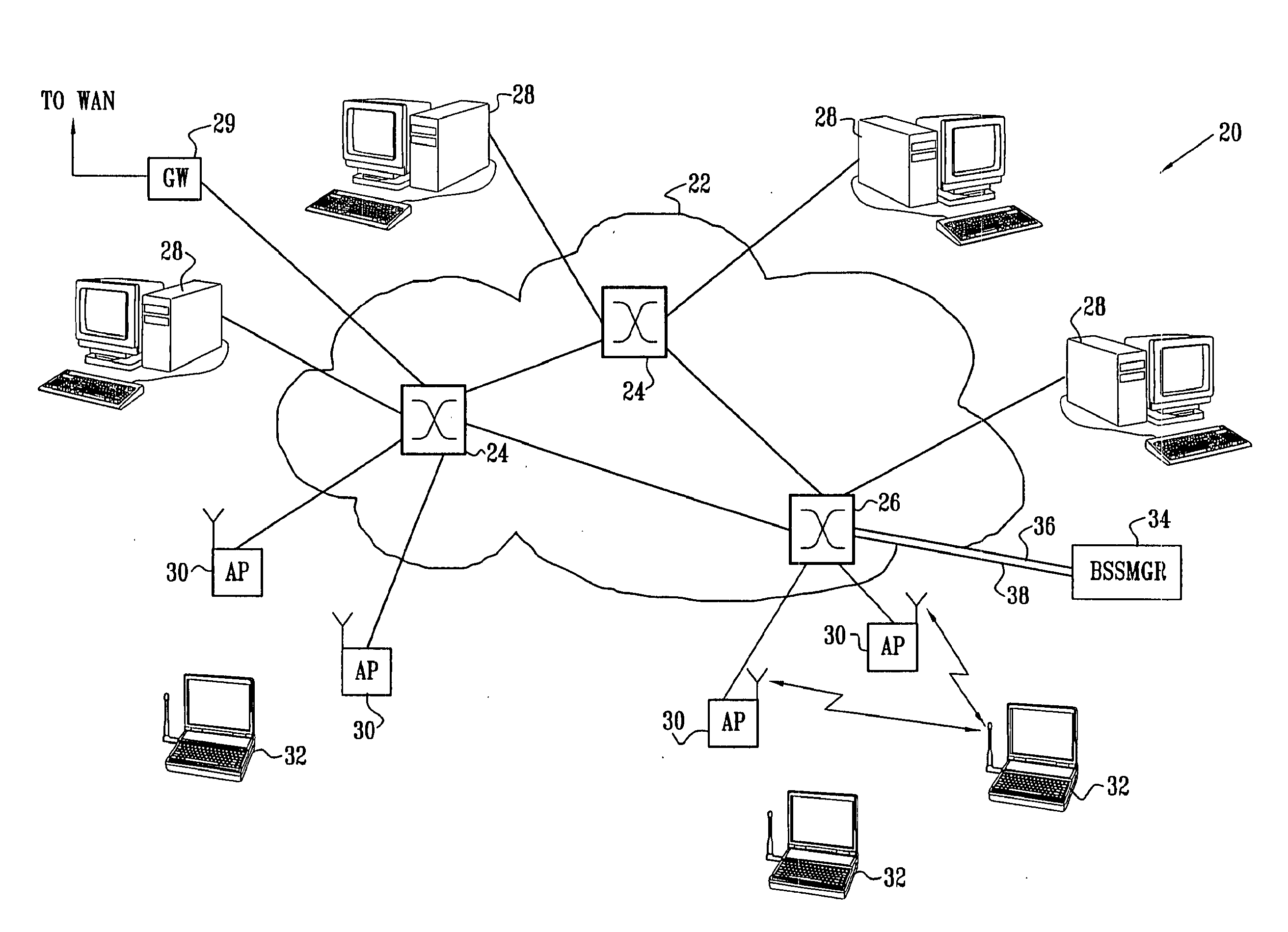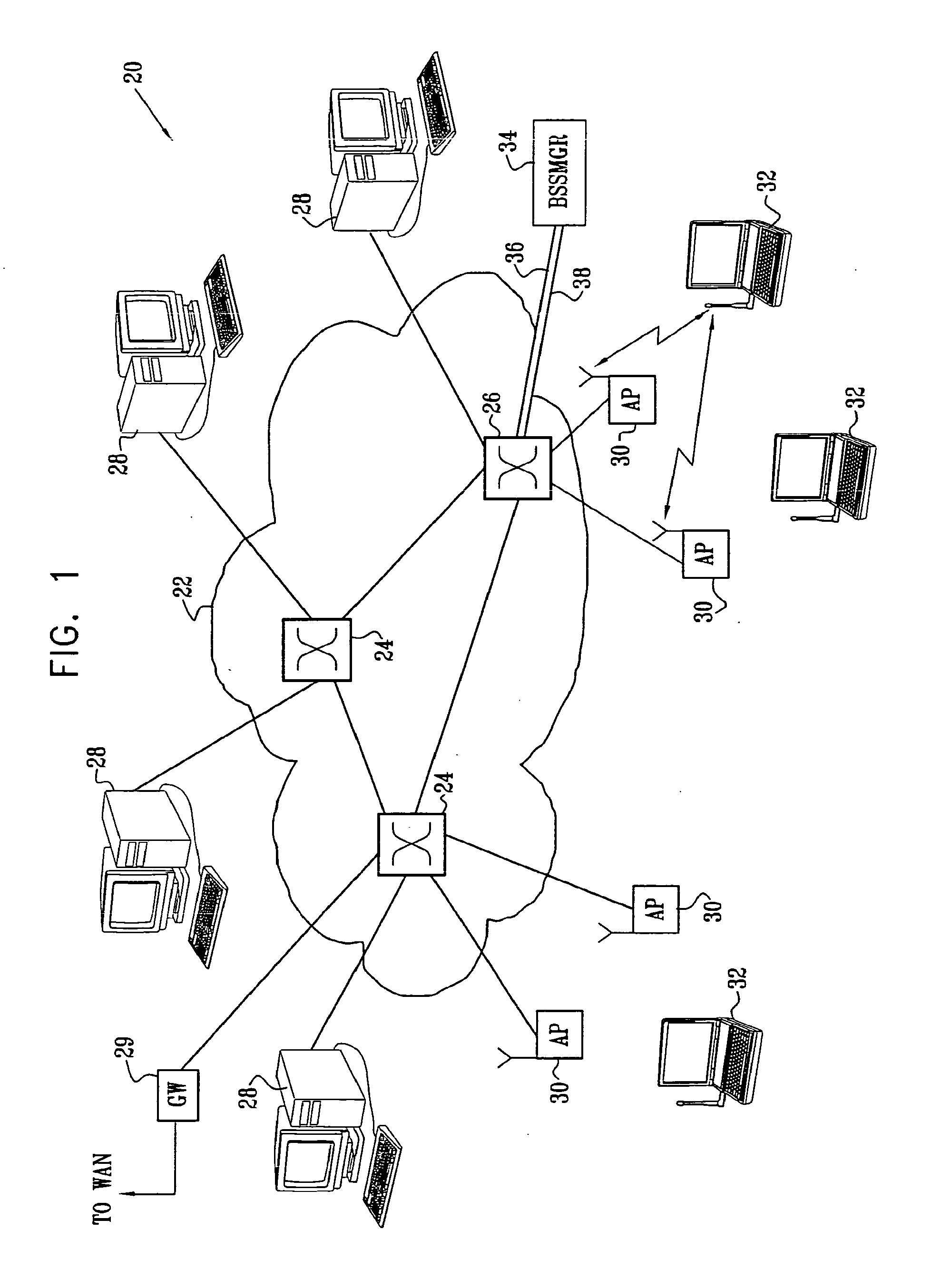Wireless LAN Control over a Wired Network
a wired network and wireless communication technology, applied in the field of wireless communication, can solve the problems of limited utility of mechanisms, inability to decipher either signal, and severe hampered the theoretical capability of new wlan technologies to offer high communication bandwidth to mobile users, and achieve the effect of enhancing the coverage and speed of wlan systems
- Summary
- Abstract
- Description
- Claims
- Application Information
AI Technical Summary
Benefits of technology
Problems solved by technology
Method used
Image
Examples
Embodiment Construction
[0045]FIG. 1 is a block diagram that schematically illustrates a wireless LAN (WLAN) system 20, in accordance with an embodiment of the present invention. System 20 is built around a wired LAN 22, comprising LAN switches 24, 26. Although three switches are shown here by way of example, in practice LAN 22 may comprise a larger or smaller number of switches, in substantially any topology known in the art. Typically, LAN 22 comprises an Ethernet LAN, in accordance with one of the IEEE 802.3 standards. Preferably, for the purposes of the present embodiment, the LAN has a characteristic data rate of at least 1 Gbps, as provided, for instance, by Gigabit Ethernet LANs. Alternatively, system 20 may be built around a lower-speed LAN, such as a 100 Mbps Ethernet LAN. In either case, embodiments of the present invention provide novel methods for reducing latency of communication over LAN 22 between WLAN elements, as described below, in order to meet the tight timing requirements of the WLAN w...
PUM
 Login to View More
Login to View More Abstract
Description
Claims
Application Information
 Login to View More
Login to View More - R&D
- Intellectual Property
- Life Sciences
- Materials
- Tech Scout
- Unparalleled Data Quality
- Higher Quality Content
- 60% Fewer Hallucinations
Browse by: Latest US Patents, China's latest patents, Technical Efficacy Thesaurus, Application Domain, Technology Topic, Popular Technical Reports.
© 2025 PatSnap. All rights reserved.Legal|Privacy policy|Modern Slavery Act Transparency Statement|Sitemap|About US| Contact US: help@patsnap.com



